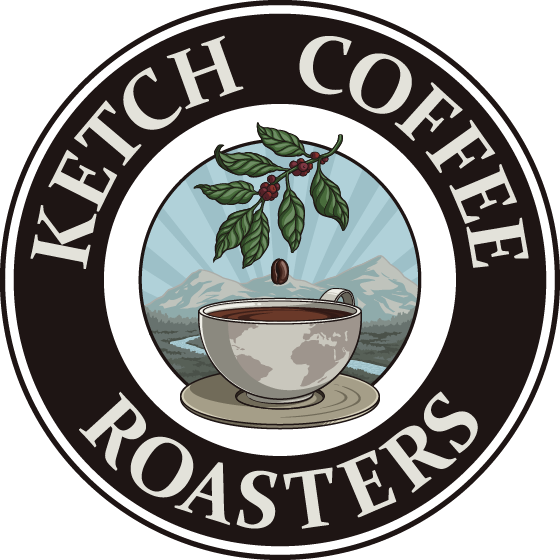Key Finding: Roast color meters are a very valuable tool for in-house quality control but they are a poor tool for comparative roast color analysis where roasters are using different color meters to compare and dialogue about roast color and roast level.
One does not have to be in the coffee space long to realize that roast level designations are about as subjective as flavor perceptions. What many of the large commercial Second Wave style roasters refer to as “light roasts” are considered very dark by Third and Fourth Wave standards. What many Third and Fourth Wave roasters refer to as “dark roasts” others would refer to as a medium roast. What I refer to as medium dark I have found that many others refer to as a medium roast. What I refer to as medium light I have found that many others refer to as a light roast. This is to say nothing about the use of the other terminology such as City, Full City, City Plus, etc. There seemingly is no agreement or consensus among coffee roasters about roast level terminology.
In 2021, this subjectivity motivated me to purchase a RoastRite Bigfoot roast color meter under the naive belief that I could use it to have an objective standard for roast level classification and as one step in my quality control plan. The idea being that once I established a roast profile for a particular coffee, I could collect whole bean and ground color measurements as two other data points along with things such as weight loss and profile adherence to ensure that subsequent roasts were in an acceptable range of the standard I had established for a particular coffee. While 100% adherence is ideal, I have found that there is a margin of error and deviation that doesn’t result in perceptible flavor differences. For me, if a roast goes off profile and outside of this standard, it is flagged for tasting before distribution.
The RoastRite color meter uses the SCA Gourmet color scale for whole bean roast level identification, which runs 100-0. The higher the color measurement the lighter the roast level. The lower the color measurement the darker the roast level. The roast color scale is as follows: 75 and higher is light (100 is the max); 65 is medium light; 55 is medium; 45 is medium dark; and 35 and below is dark. As you can see, these are very broad classifications with a lot of color range in between. The color meter comes with a black and white disk for “calibration.” The use of the term calibration is really a misnomer as the disk is used to merely conduct a verification of calibration. In other words, when you use the disk and go through the testing sequence, the color meter does not use the disk as a standard that it tunes or aligns itself with. The color meter merely uses the testing sequence to verify that it is functioning within an acceptable range. If it is out of range, it will display an error message.
Following the purchase of the RoastRite color meter, I began to communicate with other people who had RoastRite color meters. I even exchanged some coffee with one person who had a RoastRite color meter and we found that our color meter readings were up to ten Agtron points different, which is enough to classify the coffee a different roast level. This motivated me to put up a post in the Coffee Roasters Forum Facebook group to see if I could identify other RoastRite owners who might be willing to take part in an experiment where we all tested the same coffee. I ultimately found two RoastRite owners who agreed to participate. One actually owned two models of the RoastRite. I also reached out to RoastRite who agreed to participate.
I roasted two coffees for the experiment. I roasted one lighter and one darker. I ground both coffees with the grind setting on my Ditting 804 Lab Sweet I use for espresso. I vacuumed sealed the coffee and shipped the samples out. The goal was for all testers to test the coffee on or about the same day to eliminate as many variables as possible. Given the cost of sending the coffee sample to RoastRite in Taiwan, I only sent them the lighter sample. Three color measurements were taken. Here are the results:
Sample #1
RoastRite (in-house control unit)
Sample #1: 97-98-100
Blake Manning
Sample #1: 97-97-97
Larry Duran
Sample #1: 105-103-104
Tim Piazza
Sample #1 RoastRite #1: 114-115-115
Sample #1 RoastRite #2: 115-115-116
Sample #2
Blake Manning
Sample #2: 65-65-65
Larry Duran
Sample #2: 66-67-66
Tim Piazza
Sample #2 RoastRite #1: 79-79-79
Sample #2 RoastRite #2 80-80-80
Conclusion: The roast color meters are extremely accurate internally among each user. The differences are likely due to sample preparation. The only way to determine more would be to have one person preparing all the samples with multiple color meters but this is not practical. Given the substantial differences among the testers even with the same brand of color meter, it seems clear to me that roast color meters are not an objective standard for roast level designations and are a poor tool for comparative roast level analysis and communication about roast level. So long as an individual color meter is producing consistent results and passes its internal verification of calibration, it seems that it is a useful tool for in-house quality control but even then should be one tool among others for roast level determination. It seems that roast profile analysis (in particular overall roast time and end temp), weight loss, visual roast color, and sensory clues are a more reliable metric for making roast level determinations than merely using a roast color meter.
